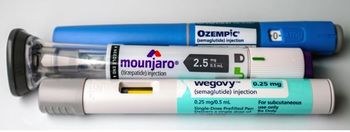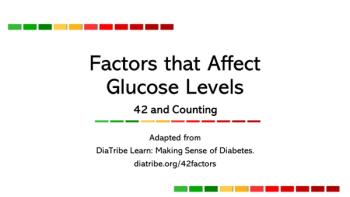
AACE: Human Growth Hormone is No Fountain of Youth
SEATTLE -- Human growth hormone is useful in adult patients for correction of endocrine deficiencies but not as a fountain of youth, reported investigators here.
SEATTLE, April 16 -- Human growth hormone is useful in adult patients for correction of endocrine deficiencies but not as a fountain of youth, reported investigators here.
Recombinant human growth hormone (rHGH) is actually underused in transition patients -- those who were treated for endocrine disorders in childhood but are now on the cusp of adulthood, said David Cook, M.D., of the Oregon Health Sciences University in Portland.
But when the patient is an otherwise healthy adult who sees rHGH as a magic shield against the ravages of time, the evidence just isn't there, while evidence of potential harm is abundant, noted George Merriam, M.D., of the University of Washington here.
Dr. Cook and Dr. Merriam discussed the practical applications and pitfalls of human growth hormone in adults at a general session of the American Association for Clinical Endocrinologists meeting here.
Whether to stop rHGH or when is unclear, Dr. Cook said, but the rule of thumb is that treatment should continue until patients reach their final adult heights, and at that point they should be reassessed to determine whether there is persistence of the natural growth hormone deficiency.
Although some investigators have suggested that transition patients could be put on hiatus from growth hormone therapy for up to two years, patients often experience a gain in body fat and a loss of bone mineral density in the interim, Dr. Cook noted.
"Soft tissue density body composition deteriorates rapidly after growth hormone is discontinued," he said, "and bone mineral density probably can coast a little bit for a while -- 18 to 24 months after you've kick-started it. But we worry about accrual and whether you've lost that period of growth."
Young adult patients generally need growth hormone replacement therapy throughout the accrual phase of bone mineral deposition, which peaks at ages 25 to 30 (later in men than in women).
Growth hormone in transition patients can also protect against cardiovascular risks, especially a decrease in ejection fraction, that can occur when supplemental therapy is stopped, according to Dr. Cook.
And although the use of human growth hormone in early clinical studies was thought to increase the risk for certain malignancies based on in vitro studies and associated with increased risk for some malignancies, including colorectal, breast, and prostate cancer cell lines, and lymphoma, those studies were mixed and were based on experience with hormone derived from human pituitary extracts, and not the recombinant hormone in use today, Dr. Merriam noted.
"Probably the most rigorous single study in the United States is the childhood cancer survivor study, funded by the National Cancer Institute," Dr. Merriam said. "There was no recurrence in the recurrence rate of leukemia in the growth-hormone treated patients, and for all diagnoses there was no tumor recurrence. In fact, for certain categories of tumors, including CNS tumors and medulloblastoma, the recurrence rate is actually reduced in the growth-hormone treated patients."
Current consensus is to withhold growth hormone from patients with active malignancies and those in whom cancer status is not clear, Dr. Merriam said.
As for the use of growth hormone to keep youth a little longer or to enhance athletic performance, the most widespread off-label uses of the substance, Dr. Merriam noted that in these applications patients are starting from a physiologically normal base and adding more synthetic HGH into the mix.
"Remember, going above normal is a condition called acromegaly," he said.
He also noted that the study that kicked off the human growth hormone craze, published in the New England Journal of Medicine in 1990, was uncontrolled, involved only 21 men from the ages of 61 to 81, and lasted for only six months.
That study, by Daniel Rudman, M.D., of the Medical College of Wisconsin in Milwaukee, and colleagues, purported to show that human growth hormone in older men was associated with a decrease in body fat, increase in lean muscle mass, and a 1.6% increase in average lumbar vertebral bone density.
"Remarkably, after only six months of therapy he saw an increase in vertebral bone density, and those of you who have looked at growth hormone and bone know that 12 to 18 months is the least you can treat for in order to be able to see increases in bone density," Dr. Merriam said. "He also reported no significant side effects, and everybody who has tried to replicate these findings with the same doses has run into severe side effects and has had to cut doses by a half to a third."
Newsletter
Enhance your clinical practice with the Patient Care newsletter, offering the latest evidence-based guidelines, diagnostic insights, and treatment strategies for primary care physicians.































































































































































































































































































